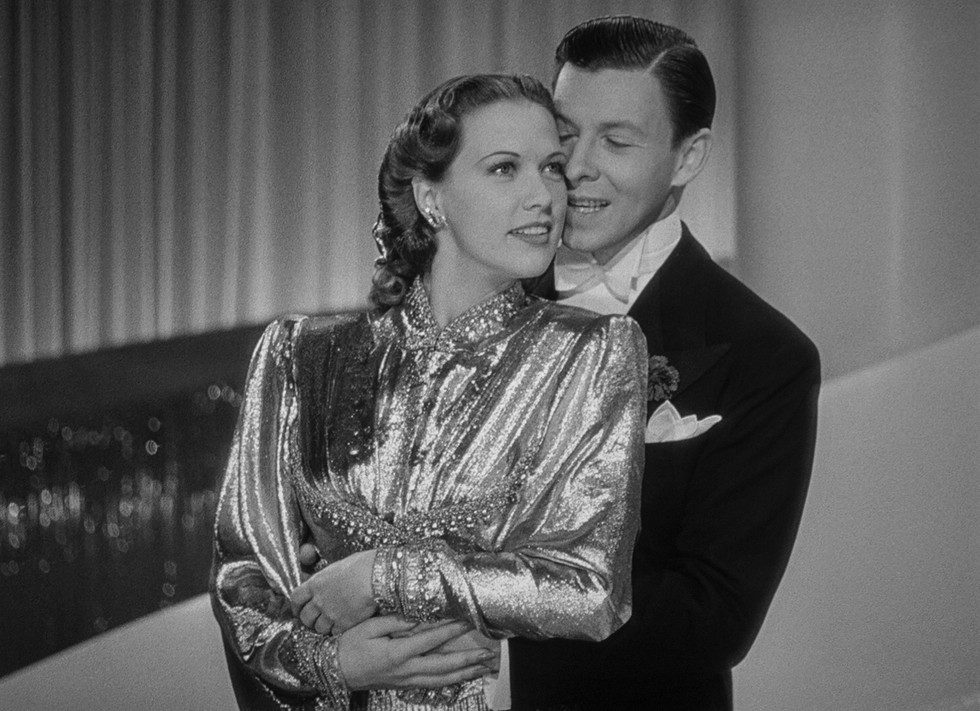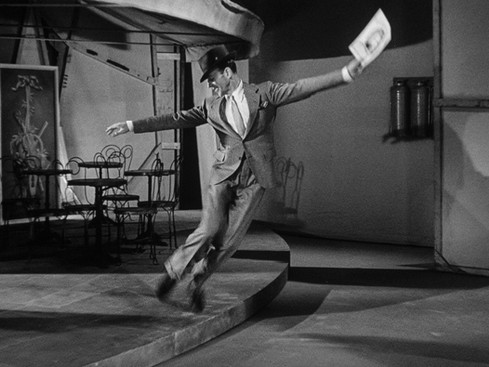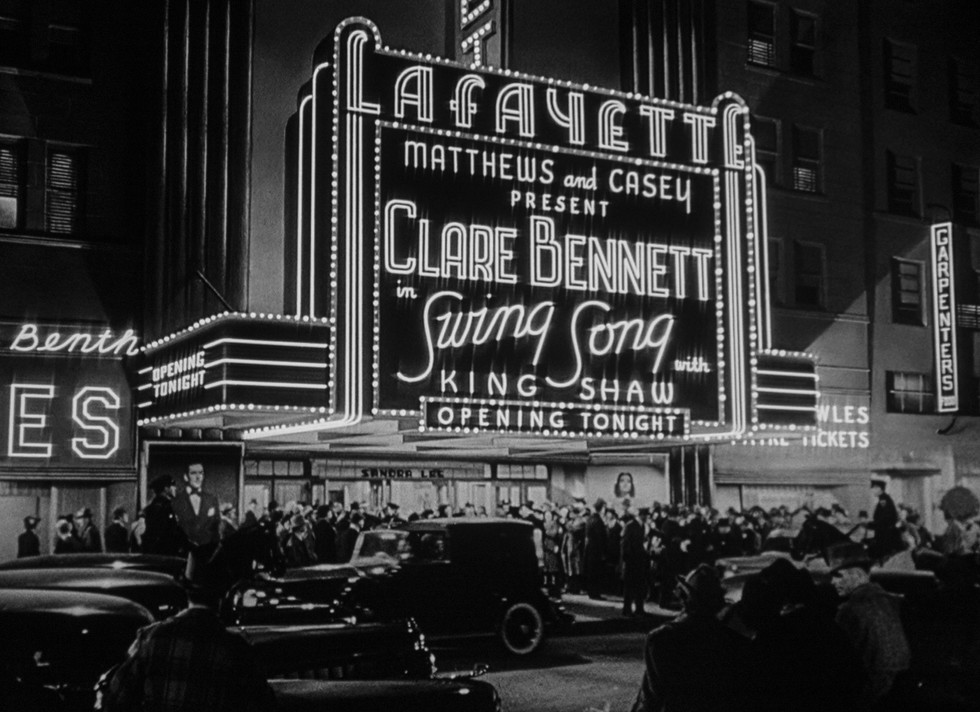Fred Astaire and Eleanor Powell light up the screen in “Broadway Melody of 1940”
- Craig Shapiro
- May 3, 2021
- 5 min read
Updated: Jun 24, 2022
BLU-RAY REVIEW / FRAME SHOTS

Eleanor Powell “The Queen of Tap” plays Broadway star Clare Bennett and Fred Astaire plays hoofer Johnny Brett, who gets his break to dance with Bennett on a floor of mirrors.
(Click an image to scroll the larger versions)
“BROADWAY MELODY OF 1940: WARNER ARCHIVE COLLECTION”
Blu-ray, 1940, unrated, good for the entire family
Best extra: The 2003 feature, “Cole Porter in Hollywood: Begin the Beguine,” with veteran tapper Ann Miller
HIGH-DEF WATCH regulars know why we’re such big fans of the Warner Archive Collection: Every release is top-notch. The visuals are pristine, the audio is robust and the extras are enlightening. The studio’s commitment to its rich catalog is second to none.
You could hardly find a better example than “Broadway Melody of 1940,” the fourth and final film in the “Broadway Melody” series that began in 1929 and the only pairing ever of dance titans Fred Astaire and Eleanor Powell. And you could hardly find a better example of why this standout stand outs than its big finale.
Dressed in white, “The King of Rhythm” and “The Queen of Tap” bring the house down in an electrifying performance set to Cole Porter’s “Begin the Beguine.” Their reflections in the black mirrored floor are razor-sharp, the 30-foot mirrors at the back of the set – at the time the largest built for a movie – give the proceedings real depth, and the orchestra just cooks.
(1) “Broadway Melody of 1940” premiered Feburary 9, 1940 and marked Astaire’s first role at MGM after his long RKO run with dancer partner Ginger Rogers. (2&3) Struggling dancers Johnny Brett (Fred Astaire) and King Shaw (George Murphy) perform with Cole Porter’s “Please Don’t Monkey with Broadway” at a Manhattan dance hall, where they work as taxi dancers. (4-7) Brett checks out Clare Bennett’s fabulous show involving tap and gymnastics with the tune “All Ashore.”
Another review quoted Frank Sinatra’s introduction to the clip in the 1974 MGM tribute, “That’s Entertainment!” “You know, you can wait around and hope,” he says, “but I’ll tell you, you’ll never see the likes of this again.”
Indeed.
Astaire plays Johnny Brett, a struggling hoofer who mistakes Broadway producer Bob Casey (Frank Morgan, “The Wizard of Oz”) for a debt collector. Hoping to buy time, Johnny passes himself off as his spendthrift partner King Shaw (George Murphy). But Bob is looking for a new partner for Claire Bennett (Powell), the toast of Broadway. When Bob phones the next day, King answers and rushes to meet his partner, Bert Matthews (Ian Hunter, “The Adventures of Robin Hood”). By the way, Johnny has a major crush on Claire.
You can guess what happens. King is hired, breaks up with Johnny and starts squiring Claire around town to drum up publicity for the show. Johnny, as true and blue as they come, fine-tunes King and Claire’s routines, and when she finds out – and sees that King is an irresponsible party boy – sparks fly.
And not just in the jaw-dropping closer.
Murphy, no slouch himself, matches Astaire step for step in the lively “Please Don’t Monkey With Broadway,” which features some of Porter’s wittiest lyrics, and partners with Powell in the elegant “Between You and Me.” “All Ashore” leaves no doubt why Powell was the undisputed champion and Astaire goes solo in the dreamy “I’ve Got My Eye on You.” Well, sort of – he dances with a photo of Powell. They finally hook up in “Jukebox Dance,” a jazzy number that’s as energetic as it is seemingly effortless, and one that whets your appetite.
(1) Broadway producer Bob Casey (Frank Morgan) and his young escort. (2) Ball juggler Trixie Firschke. (3) Shaw and Bennett sing and dance with Porter’s elegant “Between You and Me.”
VIDEO/AUDIO
Warner Archive struck the new master from a 4K scan of nitrate preservation elements (1.37:1 aspect ratio), and to say it sparkles sells it short. A fine-grain bathes everything in cinematic goodness, blacks are deep and luminous – check out how Astaire’s top hat and tails shimmer – the grays are nicely nuanced, and if the whites were any brighter you’d need sunglasses. And just try to find a scratch. This is what’s meant by “picture perfect.”
The DTS-HD Master Audio 2.0 mono track rises to the occasion, too. The musical numbers, with one exception all of them by Porter, mine every inch of the center speaker, the tapping is a blast, literally, and the singing and dialogue are crystal-clear.
EXTRAS
In “Cole Porter in Hollywood: Begin the Beguine,” tap great Ann Miller, who co-starred with Astaire in 1948’s “Easter Parade,” recounts that “Broadway Melody of 1940” was his first feature after his legendary run with Ginger Rogers at RKO. Working with Powell, who had starred in the 1936 and 1938 editions of the series and usually danced solo, was unnerving, but he wasn’t one to turn down a challenge. Powell, apparently, felt the same.
Anyway, Miller says that Astaire was an “absolute taskmaster,” in a good way, when rehearsing his dances. Did he bring that same attention to detail to this outing? You have to ask?
She also goes into detail about construction of the spectacular set for the concluding “Begin the Beguine.” It took eight weeks to build and the mirrored floor stretched over 6,500 square feet. When MGM couldn’t find anyone to create it, the studio did it itself. Set designer Edwin B. Willis made sure it stayed scratch-free by keeping it covered until the cameras rolled.
Footnote: Porter wrote “Begin the Beguine” for the unsuccessful, 1935 Broadway play “Jubilee,” and it might have stayed on the shelf if Artie Shaw hadn’t reimagined it as a swing classic three years later. When the producers of “Broadway Melody” asked Porter about using it, he gave them their blessing.
Other extras include the vintage Our Gang short “The Big Premiere” and the MGM cartoon “The Milky Way.” Not sure how either figures into the big picture, but who’s complaining?
The original trailer is fun, too. Over clips of Astaire and Powell doing their unrivaled thing, it proclaims: “The King of Rhythm. The Queen of Tap.” They were born to dance together.”
Were they ever.
– Craig Shapiro
(1&2) The multi-talented Astaire plays the piano and sings and dances with the dreamy “I’ve Got My Eye on You.” (3) Brett and Bennett finally dance together with the tune "Jukebox Dance," which Powell later said was her favorite dance number of her career. (4) Shaw gets jealous of Brett’s dance advances with Bennett.
(1) Opening night of Bennett’s new Broadway show with King Shaw. (2) Shaw shows up drunk and unable to perform, so Brett takes over as he and Bennett hope for the best. (3&4) Their first number featured ballet and by nights end Shaw had seemingly sobered up and joins the fun.





































Comments